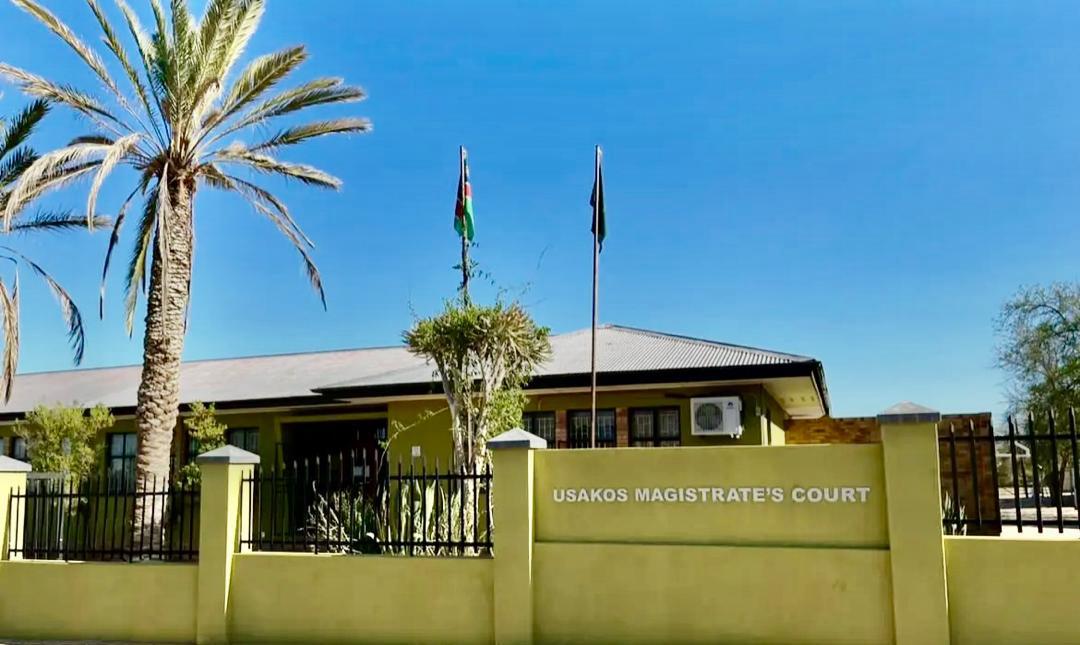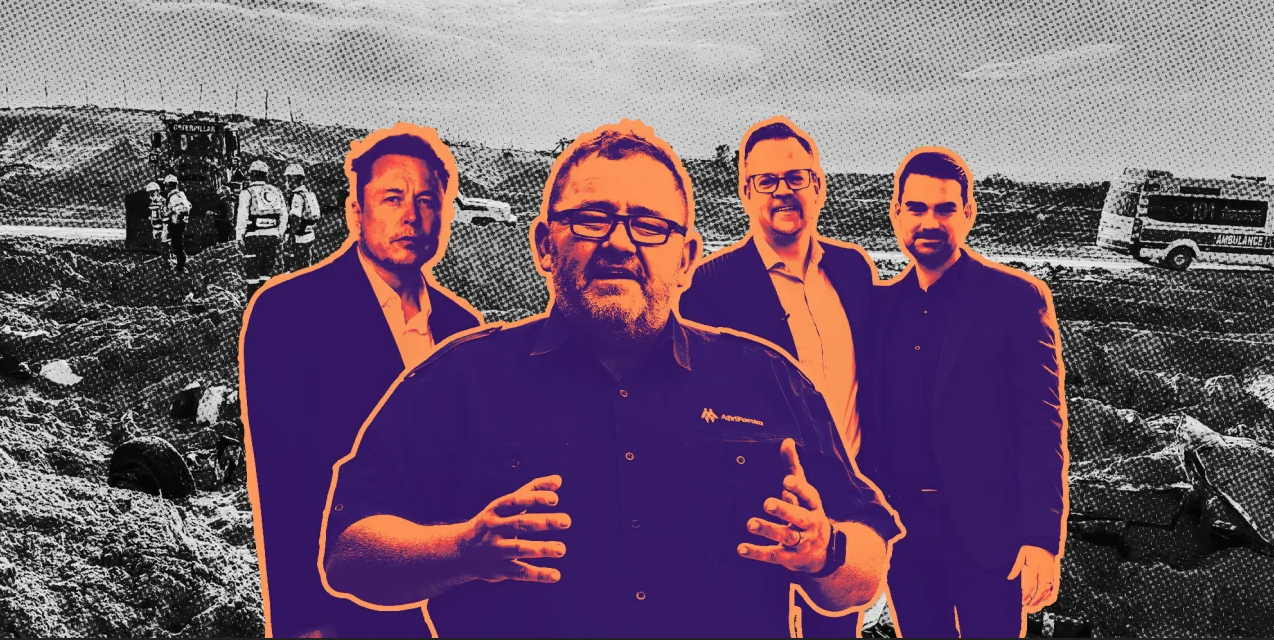Three artisanal miners who recently emerged from abandoned mine shafts in Stilfontein in North West have told the Constitutional Court about the abhorrent conditions underground. The NGO Mining Affected Communities United in Action wants the court to sanction police and other government actors. Meanwhile, government lawyers argue that the Buffelsfontein Gold Mine should be responsible for the rescue operation.
Illegal miners who were rescued from the depths of Shaft 10 at the Buffelsfontein mine in Stilfontein in the North West say that conditions have become so desperate that those still underground have resorted to consuming human flesh.
The accounts are contained in court papers submitted to the Constitutional Court in which the miners allege that conditions have become extremely desperate underground since the start of police operation Vala Umgodi.
From around September, police have limited the flow of food and other goods to groups of miners who allegedly entered abandoned mine shafts of the Buffelsfontein Mining Group. Police officers have been stationed above ground night and day, resulting in those underground being cut off from their usual food supplies. Police contend that the miners are conducting illegal work and know how to emerge from the blocked shafts.
However, several community and rights groups have accused the police operation of being inhumane.
In the most recent case brought by the Mining Affected Communities United in Action (Macua), the NGO claims that the police operation has blocked food supplies, leading to unnecessary death. According to the NGO, at least nine bodies have been retrieved from the Stilfontein shafts and 34 miners rescued through a makeshift pulley operation led by people from the nearby Khuma village.
Right to food
While Macua and several other organisations have brought cases to the high court, this is the first time that the ConCourt has been called to weigh in on the matter. The NGO’s national administrator, Sabelo Mnguni, wants the application to be dealt with on an urgent basis and has asked the court to order the South African Police Services (SAPS), the North West MEC for Community Safety and Transport Management and the ministers of Mineral and Petroleum Resources, Police, Social Development and Co-Operative Governance and Traditional Affairs to offer humanitarian aid to those underground. Macua also wants the government departments and Buffelsfontein Gold Mine, which owns the mining rights for the abandoned shafts, to begin an immediate rescue process. It also wants the SAPS to allow Lawyers for Human Rights to gain access to those miners who emerge from underground.
“The right to access to food and the right to life are of paramount importance and need to be preserved by organs of state. The applicant’s case is simply that, as the applicant’s and community members’ means to feed and rescue the miners have run out, if this honourable court does not intervene the death toll will only increase,” Mnguni says in court papers.
In support of the application, Macua submitted affidavits of three miners – Clement Moeletsi, Setsoto Mashiane and Tshotleho Ntsokolo. While Moeletsi’s affidavit paints a detailed picture of the situation underground in the months since the beginning of Operation Vala Umgodi, the other two affidavits alleged that miners have resorted to eating human flesh to survive.
Mashiane, who was rescued on 25 December, deposed a short affidavit for the application.
“I confirm that I was trapped underground at shafts 10 and 11 of the Buffelfontein Gold Mine. I was rescued on 25 December 2024 and confirm that prior to my rescue, some miners had resorted to consuming human flesh from other deceased miners in a desperate attempt to stay alive,” the affidavit says.
Ntsokolo’s affidavit is largely similar to Mashiane’s except that he escaped using ligater, which are metal rods within the mine that lead to the surface. He too confirms that some miners are consuming human flesh to stay alive.
Surviving on underground water
Moeletsi, who did not witness human flesh consumption directly, speaks of other conditions underground. He explains that he entered the mine on 24 July 2024, “driven by financial hardship and the overwhelming need to provide for my family”.
“Despite my best efforts, I was unable to secure employment, leaving me without the means to support my household. The pressure of not being able to provide food of basic necessities for my child and loved ones became unbearable, leaving me with no choice but to take this desperate step in the hope of alleviating our dire situation.”
Moeletsi says during the month before Operation Vala Umgodi started to affect the miners, he noted that conditions underground were difficult.
“The environment was suffocating and devoid of natural light, the air thick and heavy,” he says.
When the police disrupted the food supply, Moeletsi says the situation underground deteriorated.
“The abrupt termination of supplies left us utterly blindsided, as we had no warning or explanation for why the provision of food, water, medication and other basic supplies had suddenly stopped. The lack of communication added to the distress, leaving us in a state of confusion and desperation as we struggled to survive in increasingly dire conditions.”
Within a month, the miners became desperate, Moeletsi says.
“People began eating cockroaches and mixing toothpaste with salt to create makeshift meals, extreme measures born out of sheer deprivation. The lack of food and safe drinking water left us with no viable means of nourishment. From September through October 2024, the absence of even basic sustenance was absolute, and survival became a daily battle against starvation.”
Moeletsi says he went without food and safe drinking water for nearly six weeks, leading him to become “physically and mentally drained”.
“To survive, I resorted to drinking underground water, which had a strong chemical taste. While it kept me alive, it came at a cost. I suffered severe headaches, abdominal pain and what I suspect were symptoms of stomach ulcers, brought on by the water’s contamination.”
Moeletsi tells the court that he saw many miners “wasting away” underground, and argues that the deaths were preventable.
“As days turned to weeks without food, their movements became sluggish, as if every step was an unbearable effort. The fat that once cushioned their frames disappeared, leaving bones painfully visible beneath thinning skin. Faces hollowed out and limbs looked impossibly frail,” Moeletsi says.
He also describes the final moments of those he witnessed dying, saying “they didn’t die with any great commotion, just a quiet surrender as if their bodies had finally given up”.
“It was not an illness that killed them. It was starvation. A cruel, drawn-out death that consumed them piece by piece. This is what I saw underground. This is what we lived through, and this is why, respectfully, no one, despite what they have done, should ever endure such suffering again.”
Moeletsi also describes how some miners plummeted to their deaths when they tried to climb out using metal rods called “ligaters”, which are “single metal rods extending from the deepest part of the mine to the surface.” According to Moeletsi, miners tried to climb these thin rods as a means of escape, but ultimately failed.
“Those who fell plummeted to the very bottom of the mine, a place so remote and dangerous that recovery was nearly impossible without specialised equipment. Their remains were left at the base of the mine, a haunting reminder of the lengths people went to to fight for survival.”
Moeletsi says that in November, the illegal miners had heard news that food was being delivered to the entrance of Shaft 11, and they made their way there through underground passageways. The area around the shaft was crowded and when food was eventually delivered on 16 November, Moeletsi says fights broke out.
“What I witnessed in shafts 10 and 11 will stay with me forever, a testament to the cruelty of neglect and the resilience of those who fought to survive despite impossible odds. During the food distribution, another artisanal miner and I counted roughly 900 people waiting in line for a share. The sheer number of people, coupled with their weakened and emaciated state, made the scene harrowing. Although we counted 900 people, I believe there were still other artisanal miners scattered throughout different levels of the mine,” he said.
Moeletsi was rescued from Shaft 11 on 9 December, and he says he was selected by “the community underground due to my weakened state”.
“The relief of being taken out of the mine was overwhelming, but the toll of the experience still weighed heavily on me,” he said.
After surfacing he was arrested and was released on 31 December.
Opposition to the application
The government respondents have opposed the application, saying the case should not have been brought before the ConCourt at this stage. The ConCourt is the court of last instance, meaning it is the final decision maker on legal matters in the county, and as a result, most cases go through the high court and Supreme Court of Appeal before reaching the ConCourt.
However, the ConCourt can choose to hear any case on constitutional grounds in exceptional circumstances. Kantoro Isaac Chowe, a deputy state attorney who deposed the affidavit on behalf of the government, says the case brought by Macua doesn’t have any exceptional circumstances.
“The applicant attempts to obscure the numerous fatal flaws in its high court application by relying on emotionally charged rhetoric, seeming in the hope of securing direct access out of sympathy for the unfortunate circumstances the illegal miners have created for themselves,” Chowe says.
He also points out that between 15 November and 18 December, Macau had brought four urgent applications to the high court and argues that the NGO wants to rectify errors in its previous cases through the ConCourt case.
Chowe also argues that Macua doesn’t make a strong case for the enforcement of rights under section 38 of the Constitution.
“By presenting its case in such a materially deficient manner, the applicant has failed to address the fundamental prerequisites for obtaining a constitutional remedy under Section 38,” he says. Section 38 deals with the enforcement of the rights within the bill of rights.
The State Attorney also wrote a letter to Chief Justice Mandisa Maya, on 31 December, requesting more time to file additional court papers. In the letter, the State Attorney says that the Buffelsfontien Gold Mine (BGM) company should have taken reasonable steps to secure the mine shafts, in terms of the Mine Health and Safety Act.
“In terms of our common law, BGM’s legal duty may extend to (illegal) trespassers depending on the facts,” the State Attorney says in the letter.
The letter also indicates that a report commissioned from Mine Rescue Services (MRS) by BGM indicates that it could cost R11.3-million to rescue the illegal miners. After lowering a camera into the mine, the MRS estimates that 550 people are underground. The estimate excludes the cost of building an access road that would be capable of bearing the lead of the 45-tonne mobile rescue winder.
“As to the estimated duration of a rescue operation, the MRS report states the following: ‘With 550 illegal miners number reported to us during the camera inspection we added a 10% contingency and the number of employees we can extract during the active 10 hours hoisting shift will be 34, and a total of 16 days to extract all’.”
The State Attorney said BGM has previously acknowledged that “the legal duty in respect of the trespassing miners rests upon BGM”.
“It contends, however, that the costs of the operation should be provided from the mine rehabilitation fund, which is misplaced, but irrelevant for the issues under consideration.”
BGM has also indicated that it will oppose the case and has asked for more time to prepare its court papers. DM
Stay informed with The Namibian – your source for credible journalism. Get in-depth reporting and opinions for
only N$85 a month. Invest in journalism, invest in democracy –
Subscribe Now!










